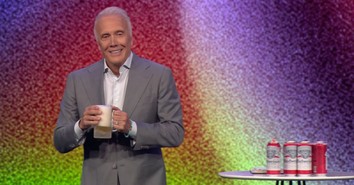On Film, "The Da Vinci Code" Breaks Down

Release Date: May 19, 2006
Rating: PG-13 (disturbing images, violence, some nudity, thematic material, brief drug references and sexual content.)
Run Time: 149 min
Director: Ron Howard
Actors: Tom Hanks, Audrey Tautou, Paul Bettany, Ian McKellan, Alfred Molina, Jean Reno, Jurgen Prochnow
Early in "The Da Vinci Code," Professor Robert Langdon (Tom Hanks) tells Sophie Neveu (Audrey Tautou) that a proper understanding of our past allows us to better understand our present.
Moviegoers should heed his lesson. In 1990, Hanks took on the lead role in a star-packed literary adaptation of a blockbuster best-selling novel. The result, Brian De Palma’s "The Bonfire of the Vanities," became an infamous Hollywood flop, spawning an entire book about the debacle ("The Devil’s Candy" by Julie Salamon) and delivering a blow to Hanks’ ability to carry a film.
Hanks has since recovered, of course, with a string of Oscar-nominated blockbusters ("Philadelphia", "Forrest Gump", "Saving Private Ryan") and wildly popular animated films ("Toy Story", "Toy Story 2", "The Polar Express" ), but his appeal abandons him in "The Da Vinci Code," a mystery so lifeless, in a package so dull, that even its most outrageous allegations about Jesus Christ and the Catholic church don’t get much traction.
Those claims are at the heart of a story that begins when Professor Langdon, a symbologist, is called to the Louvre, where a museum curator scheduled to meet with Langdon has been murdered. When cryptologist Neveu tips Langdon off to the ulterior motives of a police captain (Jean Reno) assigned to the crime, the two flee the scene and begin to unravel the mysterious clues left behind at the murder site.
That mystery involves the Priory of Sion, the Knights Templar, and their struggle over the centuries with the Catholic group Opus Dei to preserve the Holy Grail – not the chalice from which Christ drank, but the key to the film’s reinterpretation of Christian history. "Da Vinci Code" author Dan Brown’s theory about the church involves Mary Magdalene’s burial place, a physical line of descendants of Jesus, the suppression of women in the church, and the exaltation of the “sacred feminine,” which is one of Langdon’s areas of specialization.
Giving voice to these theories in the film is Sir Leigh Teabing ( ), who helps Langdon and Neveu stay one step ahead of the authorities – but never out of reach of a persistent monk (Paul Bettany, channeling Christopher Walken), who constantly emerges from the shadows, attempting to kill Langdon and anyone else who might reveal the long concealed secret of the church hierarchy. Such appearances descend into camp as the film progresses.
Despite those lapses, and the increasing silliness of the film, "The Da Vinci Code" has great power to do harm. Christians should be wary of the film, which only commands viewers’ full attention during the scenes in which Teabing lays out his conspiracy theory. The charges are explosive, and Christians should be prepared to address them. (Thankfully, many have already. Rather than piece together a shorthand version of those rebuttals in this brief review, let me refer you one of the best "Da Vinci Code" response books on the market: "The Gospel Code," by Ben Witherington III. For a quick reference, try Al Mohler’s response to the book here in Crosswalk's Weblogs.)
Director Ron Howard, who earlier worked with Hanks on the far superior "Apollo 13," never gets a strong handle on the material here. The tone is oh-so-serious – McKellan is the only performer who seems to have fun with his role – so viewers are forced to swallow the film’s story hook, line, and sinker. It lumbers along without generating any genuine tension. The performances are uninspired.
Still, "The Code" is, if not exactly good, at least watchable during its first hour. A climactic sequence not too long thereafter seems to bring the film to a conclusion, but there’s still more to come. Much more. Unfortunately, there’s no momentum, no sense of grand revelation. The film simply breaks down. The long stretches of dialogue are punishing, the pacing leaden, the visuals dark and uninviting. The story absurdly tries to wrap a faith-affirming ribbon around its church-bashing package.
Will Hanks’ star-power once again be diminished by a high-profile literary adaptation that fails to please? That’s doubtful: Hanks has proven over and over that he’s a bankable star. Howard, likewise, has had more hits ("A Beautiful Mind", "Parenthood") than misses ("The Missing"), and will continue to receive top-notch projects. Taotou’s English could use some work, but her international appeal ("Amelie", "A Very Long Engagement") won’t soon fade.
No, the only people who lose with "The Da Vinci Code" are its viewers. Your two-and-a-half hours would be better spent reading Witherington’s "The Gospel Code" than watching Howard’s film.
AUDIENCE: Older teens and up
CAUTIONS:
- Drugs/Alcohol: Brief references.
- Language/Profanity: Several profanities, some said in French; Lord’s name taken in vain.
- Sex/Nudity: A monk’s bare backside is shown; the camera lingers on a naked corpse with a symbol on his chest; an explicit sex ritual is briefly shown
- Violence: The film begins with a grisly murder at an art museum; the principal characters are under constant threat of being killed; people are shot, bloodied, bruised; a monk flagellates himself; a nun is bludgeoned to death; reckless driving.
- Faith: The film is a vicious distortion of Christianity, demeaning the very idea of the divinity of Christ; His miracles are scoffed at, as is His resurrection; the church is alleged to be responsible for the biggest conspiracy in history; Langdon’s view of faith leaves much to be desired.
Originally published May 19, 2006.





